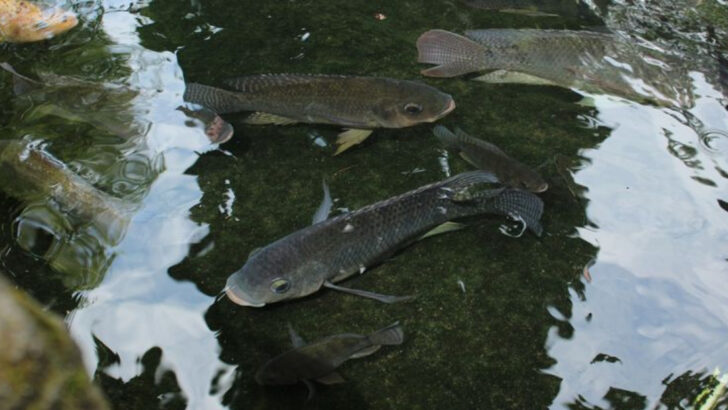Some fish are beautiful in your tank—and absolute nightmares in the wild.
What starts as a “harmless” release can end in ecological chaos.
We’re talking clogged rivers, vanishing native species, and a food chain flipped upside down.
It doesn’t matter if it was your kid’s goldfish or a brightly colored tropical predator—once it hits open water, it’s out of your hands.
And some species are far sneakier, stronger, and more destructive than they look.
This list isn’t just about what not to do.
It’s about how small mistakes turn into big environmental disasters.
Let’s meet the fish that never should’ve left the tank—and find out why letting them go could wreck everything downstream.
Asian Carp
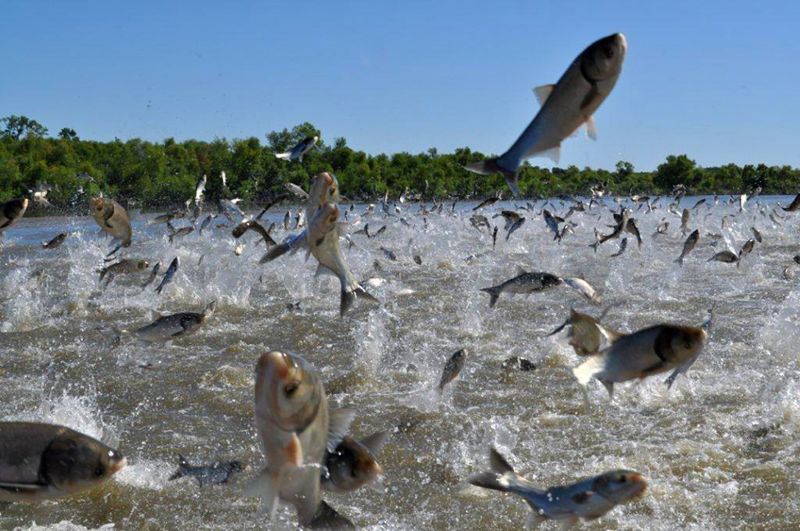
Often, Asian Carp are seen dramatically leaping out of rivers, causing both wonder and concern. Found primarily in Midwest waterways, these fish are notorious for their ability to consume vast amounts of plankton, a vital food source for native species. Asian Carp disrupt the food chain, leading to a serious decline in local fish populations. The impact on commercial fishing and recreational activities is profound. With rapid breeding capabilities, these carp soon dominate their environment, outcompeting local species. Their presence is a vivid reminder of the unintended consequences of introducing non-native species into delicate ecosystems.
Northern Snakehead

Imagine encountering the formidable Northern Snakehead in a serene Maryland pond. This invasive predator, with its snake-like body and ferocious appetite, has alarmed ecologists across the Eastern United States. Capable of breathing air and surviving on land, the Northern Snakehead poses a significant threat to native fish and amphibian populations. Their aggressive behavior and rapid reproduction rates allow them to quickly dominate new environments. The disruption they cause to local ecosystems is considerable, leading to efforts to control their spread. Their presence is a testament to the challenges faced in preserving native biodiversity.
Lionfish
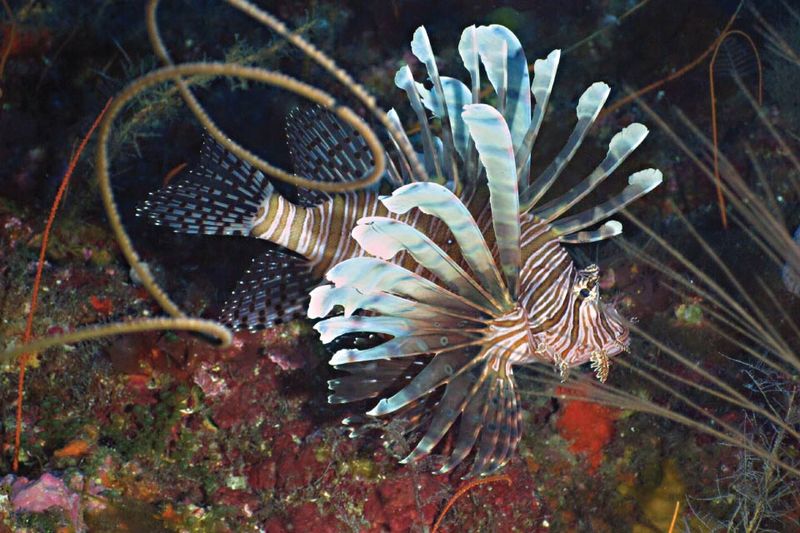
The strikingly beautiful Lionfish is an unexpected threat lurking within the Atlantic. With vivid stripes and dramatic spines, they appear almost regal, yet their impact on coral reef ecosystems is devastating. Lionfish are voracious predators, consuming large quantities of juvenile fish and crustaceans. They outcompete local species, leading to sharp declines in fish populations. Native to the Indo-Pacific, their spread in American waters highlights the dangers of releasing exotic species. Their exquisite appearance belies the harm they inflict, reminding us of the careful balance needed to maintain healthy marine ecosystems.
Common Carp
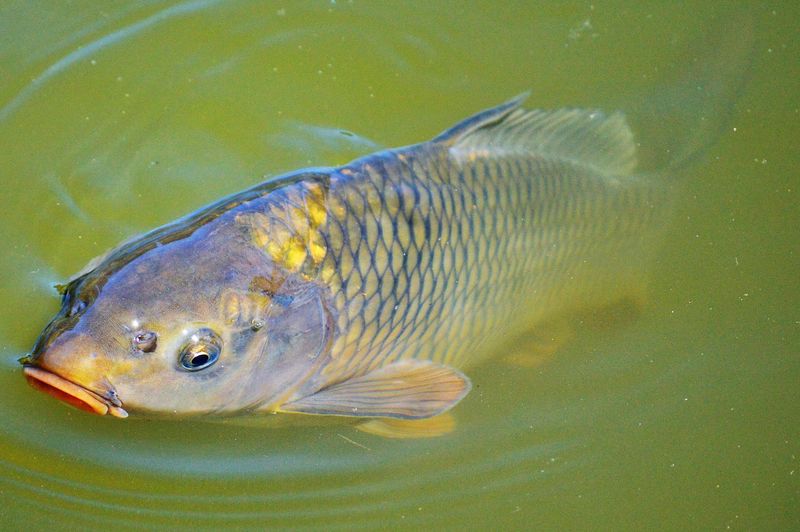
In many American lakes, the presence of Common Carp is unmistakable. These hefty fish stir up sediment as they scavenge, leading to increased water turbidity and disrupted plant growth. Their feeding habits can significantly alter habitats, affecting water quality and reducing biodiversity. Originally from Europe and Asia, Common Carp have spread across many U.S. waterways. Their impact is particularly pronounced in shallow lakes and rivers, where their activities can make the water unsuitable for native aquatic life. They serve as a stark reminder of the need for careful management of fish populations.
Bighead Carp
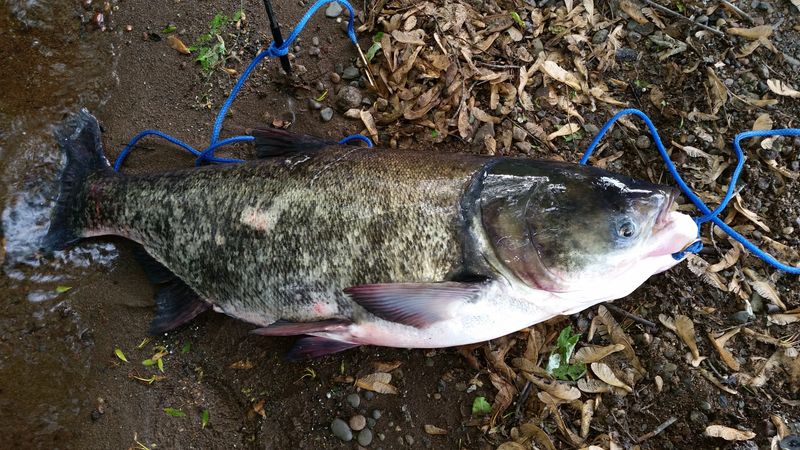
With a head as large as its name suggests, the Bighead Carp is a notable invader in Southern rivers. Its capacity to consume colossal amounts of zooplankton directly threatens native fish that rely on these nutrients. This disruption poses serious risks to commercial and recreational fisheries, reducing fish stocks and biodiversity. Bighead Carp can reach significant sizes, further amplifying their impact on ecosystems. Their presence in American waterways underscores the complexities of managing invasive species and protecting native habitats. Their large presence disrupts balance and illustrates the challenge of invasive management.
Bullseye Snakehead
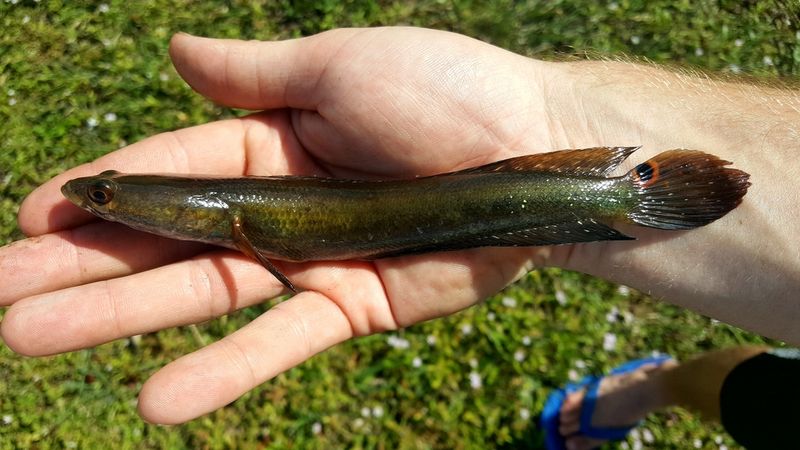
Beneath the clear waters of Florida’s canals, the Bullseye Snakehead stealthily lurks. This predator is known for its striking eye spot and relentless hunting prowess. Adapted to warm waters, Bullseye Snakeheads are aggressive and can outcompete native species for food and habitat. Their presence in Florida ecosystems has raised concerns among conservationists about maintaining biodiversity. Their ability to survive in diverse conditions allows them to spread rapidly. The Bullseye Snakehead illustrates the critical need for measures to prevent invasive species from threatening native wildlife and habitats.
Zebra Mussel

While not a fish, the Zebra Mussel’s impact on waterways is equally concerning. These small, striped mollusks attach themselves to any hard surface, clogging pipes and outcompeting native species. Originating from Eurasia, they have spread across the Great Lakes and other American waters. Their ability to reproduce rapidly and form dense colonies leads to severe ecological challenges, affecting local biodiversity and water infrastructure. Their presence serves as a cautionary tale about the far-reaching consequences of invasive species. Managing their population has become a priority in maintaining ecological balance.
Black Carp
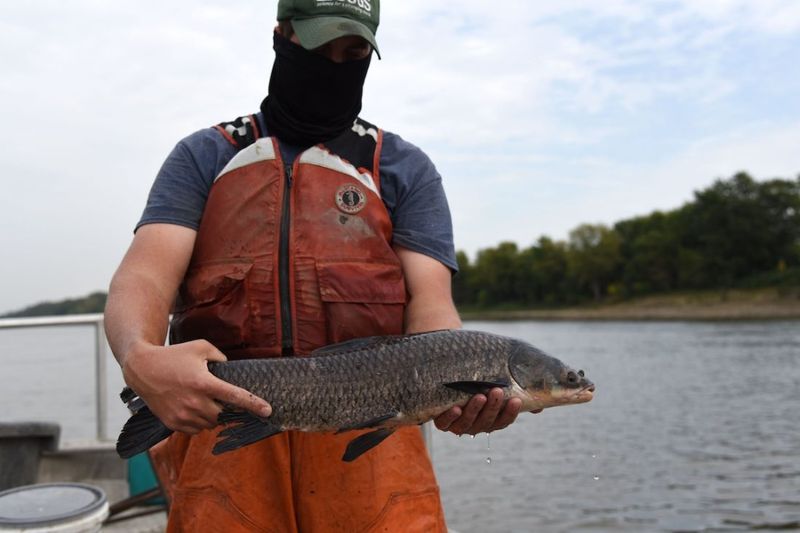
Lurking in the muddy riverbeds, the Black Carp emerges as a silent threat. Known for their appetite for mollusks, they pose a significant risk to native bivalve populations across American rivers. These fish were initially imported for aquaculture but have since escaped into the wild. Their feeding habits drastically alter the ecosystems they invade, leading to reduced biodiversity and compromised water quality. The Black Carp’s presence in U.S. waterways highlights the unintended consequences of introducing non-native species for commercial purposes. Their impact underscores the importance of careful ecological management.
Silver Carp
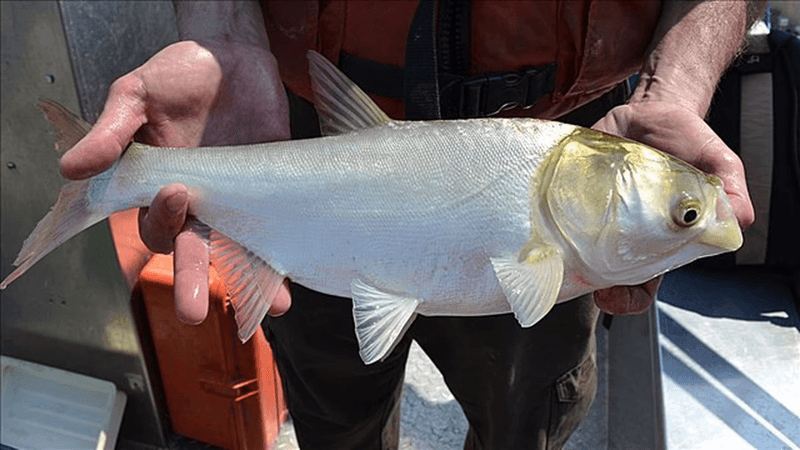
With acrobatic leaps, the Silver Carp dramatically punctuates the waters of the Mississippi River. Known for their tendency to leap when startled, these fish pose hazards to boaters and ecosystems alike. Consuming large amounts of plankton, they outcompete native fish, threatening biodiversity. Their rapid reproduction rates allow them to quickly overrun waterways, creating significant ecological disruptions. Originally introduced to control algae, Silver Carp have become a cautionary example of the risks associated with non-native species. Their presence is both a spectacle and a challenge for managing aquatic ecosystems.
Round Goby

Camouflaged against the rocky beds of Lake Michigan, the Round Goby quietly disrupts local ecosystems. These small, adaptable fish are prolific breeders, outcompeting native species for food and habitat. Their presence in the Great Lakes has led to significant declines in local fish populations. Originally from Eastern Europe, Round Gobies have spread rapidly across North American waters. Their impact on commercial and recreational fishing is notable, as they alter the balance of aquatic life. The Round Goby’s expansion is a reminder of the challenges posed by invasive species in preserving native habitats.
Flathead Catfish
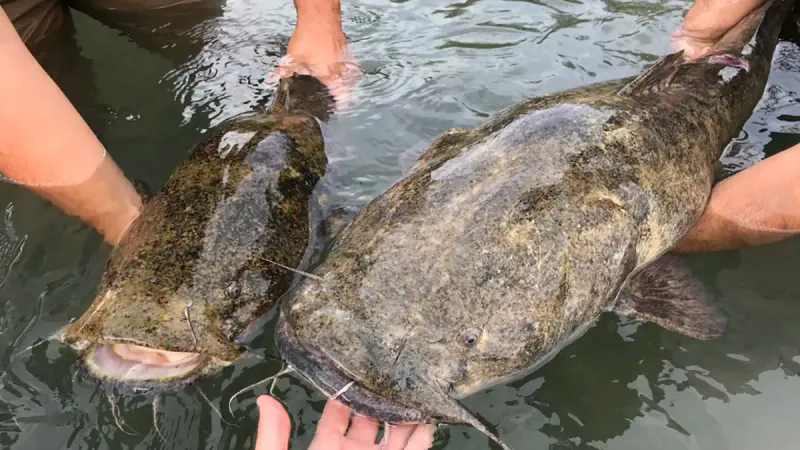
In the depths of Southern rivers, the Flathead Catfish silently prowls. Known for its voracious appetite, this predator preys on local fish species, leading to declines in native populations. Originally from the Mississippi and Ohio River basins, its spread into other waterways has caused ecological concern. The Flathead Catfish’s ability to thrive in diverse environments makes it a formidable invasive species. Their impact on local ecosystems is profound, necessitating careful management and monitoring. This catfish’s presence emphasizes the importance of maintaining ecological balance in freshwater habitats.
Goldfish
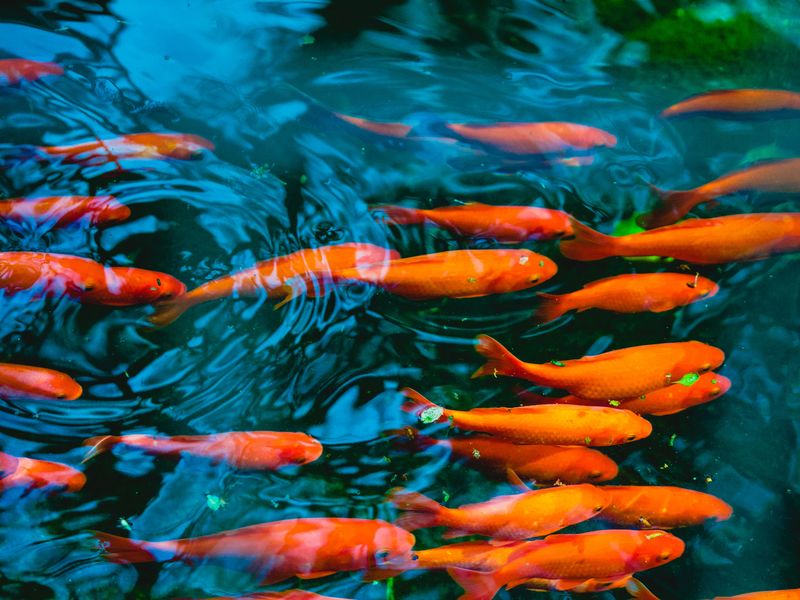
Though often considered a harmless pet, Goldfish released into the wild can cause significant ecological harm. In natural ponds, these colorful fish disturb sediment and vegetation, disrupting aquatic ecosystems. Their feeding habits increase water turbidity, affecting the health of native plants and animals. Originally from East Asia, Goldfish have spread into many American waterways, outcompeting native species. Their presence illustrates the unintended consequences of releasing pets into the wild. This serves as a cautionary example of the impact domesticated species can have on natural environments, underscoring the need for responsible pet ownership.
Tilapia
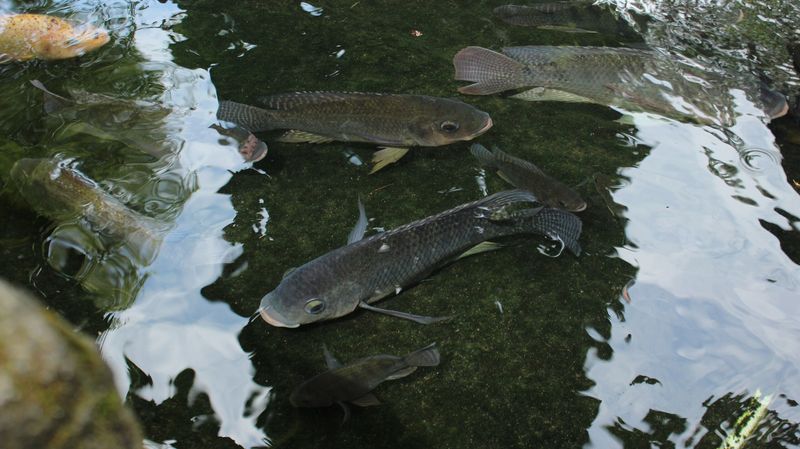
In tropical American rivers, Tilapia swim amidst native species, posing a silent threat. Known for their rapid reproduction and adaptability, Tilapia can outcompete local fish for resources. Their presence leads to reduced biodiversity and altered aquatic environments. Originally from Africa, Tilapia were introduced for aquaculture but have since spread into the wild. Their impact on ecosystems highlights the challenges of managing non-native species in sensitive habitats. Tilapia serve as a reminder of the delicate balance required to maintain healthy freshwater ecosystems and the need for vigilant ecological management.

